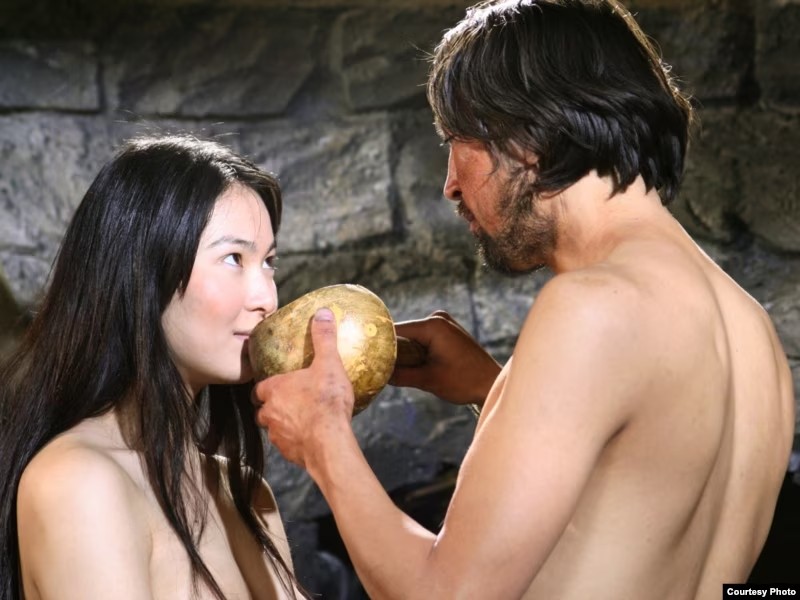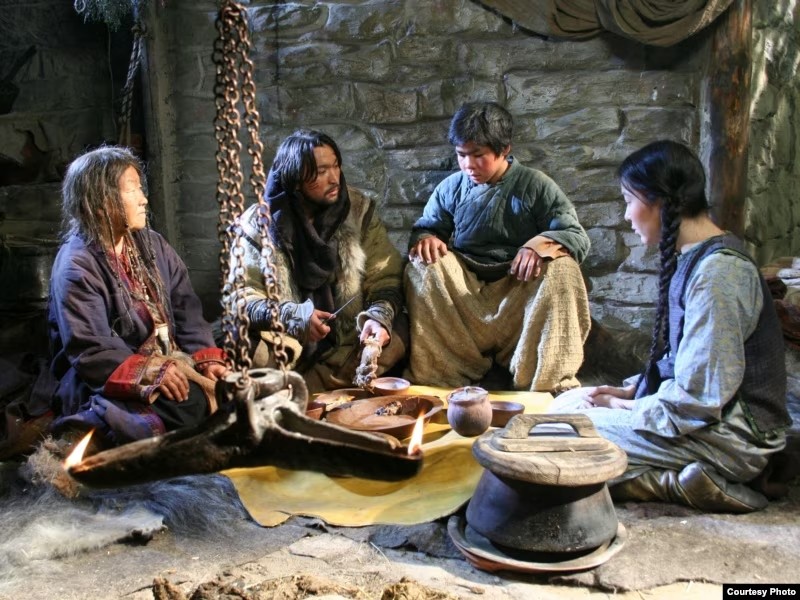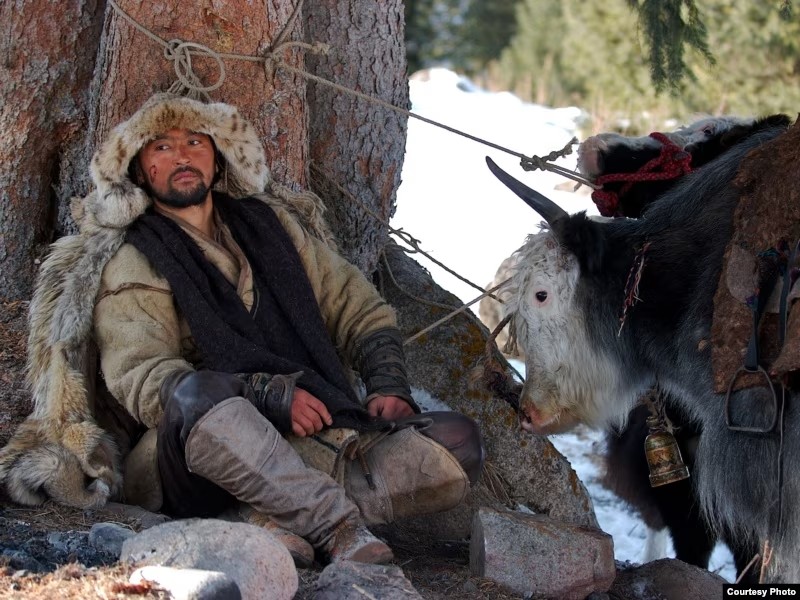Ermek Tursunov: Kelin
reviewed by Seth Graham © 2009

Although it is his debut feature as a director, Ermek Tursunov’s Kelin is a professional, thoughtful, and mature work of cinematic storytelling, no doubt in part due to Tursunov’s own considerable experience as a screenwriter, as well as contributions by some of the best-known names in recent Central Asian filmmaking, including co-writers Aktan Arym Kubat (formerly known as Aktan Abdykalykov, Kyrgyz director of Beshkempir, Maimyl and other successful films) and Marat Sarulu (also a well-known director in both the Kazakh and Kyrgyz film industries), as well as director of photography Murat Aliyev (a veteran Turkmen director and actor).
On the surface, Tursunov’s film has a simple and traditional melodramatic plot, here placed in a pre-modern (indeed, pre-Islamic) Altai mountain setting, and made more distinctive by Tursunov’s decision to shoot the film without dialogue; the aural plane of the film is occupied by the sounds of nature, human cries, grunts, laughter, and incantations, and a sparse yet effective score by Edil Kussainov. The title character is a girl married off by her father (“Kelin” is a Turkic word meaning “daughter-in-law”) to the wealthiest young man in the vicinity, Baktashy, who, unfortunately for her, is not her first choice. Before she is taken by Baktashy back to his family yurt, Kelin’s lover, Mergen, foreshadows the film’s ultimate trajectory by cutting a mark on her arm, a blood oath that he will remain her true love, despite her marriage to another.

Initially resistant to Baktashy, the new bride rapidly learns to make the best of her situation, becoming a member of the family headed by Baktashy’s elderly, shamanic mother, Ene, and his adolescent brother, Kainy. Kelin also quickly begins to recognize and enjoy her own sexuality, and demonstrates a degree of sexual agency not often seen in the region’s filmmaking.
The setting in the Altai mountains, considered the ancestral cradle of the Turkic peoples who populate most of Central Asia, enhances the impression that this film is a screen adaptation of an oral legend. Visually the work is full of symbols, especially animals (an owl, a crow, wolves, dogs, oxen, a mouse), shots of which are intercut with frames from the key scenes in the human drama, suggesting that the animals have a totemic significance. Scenes of ritual also abound, including the escalating bidding for Kelin’s hand by the two suitors, the wedding and the departure of the bride from the family home and arrival at the husband’s, funeral rites, fertility rites, childbirth, and childcare (Ene memorably feeds her new grandchild wolf’s milk).

Although full of traditional motifs and imagery, however, and showing a clear debt to the familiar melodramatic love triangle, the plot of the film progresses in unexpected and complicated ways. The love triangle, for example, eventually becomes a “quadrilateral.” The gender roles and relationships presented are also more modern than the film’s setting and opening scenes seem to promise. Kelin’s elderly mother-in-law is a tremendously powerful figure of authority and draws her power both from her emotional investment in and connection to her family, as well as from the natural forces she uses with great skill and knowledge, to her own ends, as a shaman. Combined with the sexual forthrightness and self-awareness of Kelin herself, the two female characters ultimately prove to be the film’s center of gravity.

The high production value of Tursunov’s feature is a testament to the continuing resurgence of Kazakhfilm Studios as the main financial and creative engine of the nation’s film industry, after several years in the 1990s when native filmmakers more often than not had to seek external funding (usually in the form of European co-productions), and when many of the films produced were seen only by audiences in the rarefied atmosphere of international film festivals.[1] However, the large role currently played by Kazakhfilm in Kazakh movie-making led to a dispute between the studio and the director regarding creative control over the film itself, and it was a dispute that delayed Kelin’s release by two years. Despite its nods to tradition, ancient setting and lack of politics, it met with resistance from the Kazakh censor for its (in fact quite tame) sex scenes, which Tursunov refused to cut (Mostovoi).
Seth Graham
University College London
